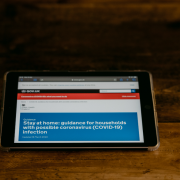Thanks for reading the 25 Days of Giving series! Plan on coming back to the blog every day from now through Christmas Day.

Tangible personal property is a fancy way of saying “stuff,” such as a painting, computer, furniture, and collectibles (excluding securities, cash, and real estate). So, if you want to donate your stuff to your favorite charity, what are the tax consequences?
Related Use
The amount of your federal income tax charitable deduction depends on the concept of “related use.” If appreciated tangible personal property is considered related to the charity’s exempt purpose, the deduction is based on fair market value (FMV) and available to the extent of 30% of your adjusted gross income (AGI).
If property is considered unrelated to the public charity’s exempt purpose, you must reduce the FMV by any amount that would have been long-term capital gain had you sold the property for its fair market value. (In short, if the FMV was greater than the basis in the property, your deduction is limited to your basis.)
To sum it up: in order for a donor of tangible personal property to be able to deduct its full FMV, the charity must use the object in a manner that is related to its (the charity’s) exempt purpose. A classic example is the gift of a piece of art, like a sculpture or painting, to an art museum.
Hypothetical
This concept of “related use” can have very profound tax consequences. For instance, assume Jill Donor owns a painting which is now worth $100,000, but Donor purchased it for only $20,000.
If Donor gives this painting to an art museum that keeps and displays the painting, Donor can deduct the painting’s full $100,000 FMV. If Donor gives the same painting to, say, a nature conservancy, which will sell the painting and use the proceeds, Donor can deduct only her $20,000 cost.
Note, that even if the object is potentially related to the charity’s mission–such as a painting given to an art museum–if the charity’s intention is to sell it upon receipt, then the gift is not for a related use and the donor’s deduction will be limited accordingly.
From our hypothetical, it doesn’t necessarily have to be gifted to a museum to be considered for a related use. In Private Letter Ruling 9833011, the IRS ruled that a gift of art to a Jewish community center would be for a related use, as the artwork had both religious and cultural significance. Also, a painting gifted to, say, a hospital may be for a related use if the hospital will display it in a common area so that it helps foster a healing environment for patients.

Takeaway
The big takeaway for nonprofits? Nonprofit boards and staffs should know and understand about “related use,” so they can recognize the issue if it arises.
The big takeaway for donors? Donors should obtain in writing the charity’s intent to use the property for a purpose related to its mission.
I want to help you, whether you’re a nonprofit organization or donor, wisely maximize your charitable giving. Don’t hesitate to reach out by phone (515-371-6077) or email (gordon@gordonfischerlawfirm.com).







